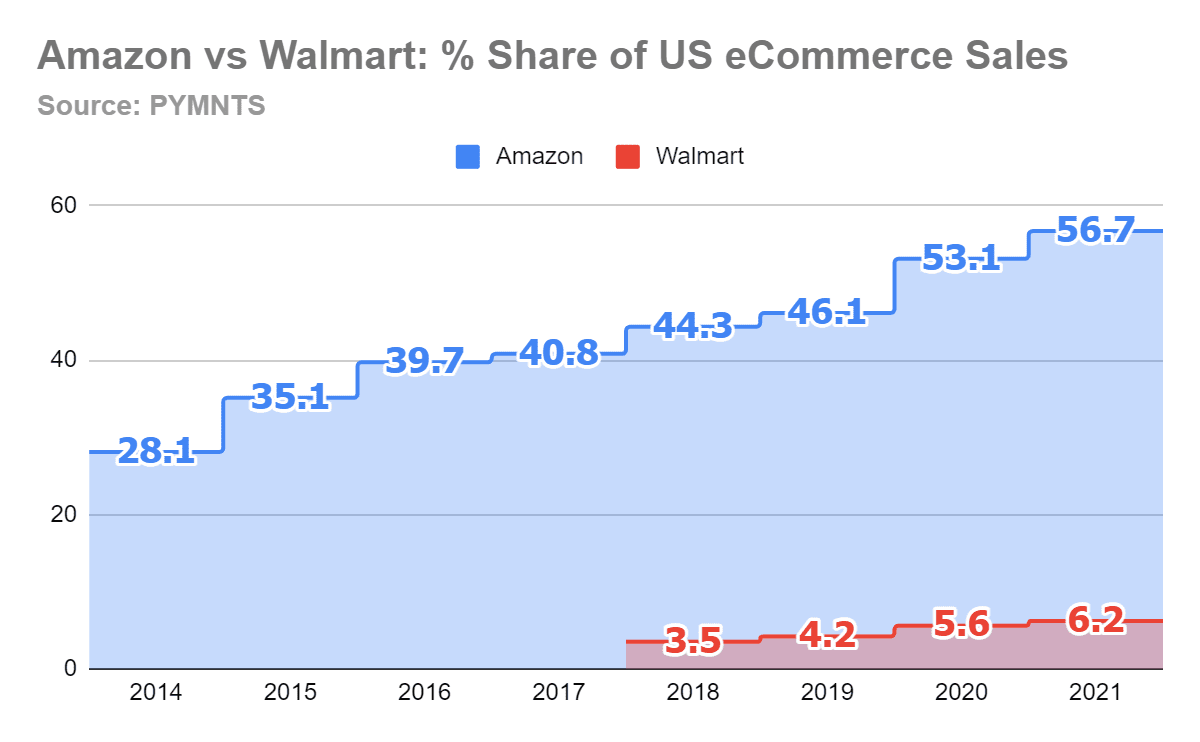Amazon and Walmart are the giants of the retail industry, with each claiming victory in different categories. Amazon started as an online bookseller and expanded into a tech company that offers a wide array of products and services. Walmart was founded as a discount retailer that focused on offering low prices and has a massive physical presence with over 11,000 stores worldwide. Amazon has a reputation for attracting younger tech-savvy consumers, while Walmart is known for serving a more diverse demographic, including rural, low-income, and older consumers. Both companies have made sustainability a priority by committing to net-zero carbon emissions and reducing their environmental impact.
Amazon vs. Walmart: Who Dominates the Retail Market?
In the world of retail, two giants loom large: Amazon and Walmart. These behemoths have spent years battling it out for dominance in the industry, with each claiming victory in different categories. In this article, we will compare and contrast the two companies in terms of their business models, customer base, product offerings, marketing strategies, and sustainability efforts.
Business Models
Amazon was founded in 1994 as an online bookseller. Over time, it has expanded into a tech company that offers a wide array of products and services, including Amazon Web Services, Prime Video, and Alexa. The company operates primarily online, although it has made forays into the physical retail space with the acquisition of Whole Foods and the opening of Amazon Go stores.
Walmart, on the other hand, was founded in 1962 as a discount retailer that focused on offering low prices. The company has a massive physical presence, with over 11,000 stores worldwide. In recent years, Walmart has invested heavily in its e-commerce capabilities and has made strides to integrate its physical stores with its online platform.
Customer Base
Amazon and Walmart have very different customer bases. Amazon has a reputation for attracting younger, tech-savvy consumers who value convenience and fast shipping. The company’s Prime membership program has been incredibly successful, with over 200 million members worldwide. Walmart, on the other hand, is known for serving a more diverse demographic that includes rural, low-income, and older consumers. The company has made efforts to appeal to younger consumers with its online offerings but still relies heavily on its physical stores to serve its core customer base.
Product Offerings
Amazon offers an almost unimaginable selection of products, from books and electronics to groceries and household items. The company has also made a name for itself in the streaming media space, with its own original content and offerings like Prime Video and Amazon Music. Walmart offers a wide variety of products as well but has historically been known for its affordable, everyday items like groceries, clothing, and household essentials. The company has expanded its offerings in recent years to include higher-end fashion and home goods.
Marketing Strategies
Amazon and Walmart have very different marketing strategies. Amazon is known for its personalized recommendations and targeted advertising, often using data from its customers’ browsing and purchasing histories to make relevant suggestions. The company has also made a name for itself with inventive and attention-grabbing marketing campaigns, such as its recent “Prime Day” shopping event. Walmart, on the other hand, has traditionally relied on more traditional forms of advertising, such as TV commercials and print ads. The company has been experimenting with incorporating social media into its marketing efforts in recent years.
Sustainability Efforts
In recent years, both Amazon and Walmart have made sustainability a priority. Amazon has committed to achieving net-zero carbon emissions by 2040 and has launched several initiatives to reduce its environmental impact, such as its “Shipment Zero” program, which aims to make all Amazon shipments carbon neutral. Walmart has also made strides in this area, committing to becoming “regenerative” by 2030 and aiming to achieve zero waste in its operations. The company has also focused on reducing its carbon footprint and increasing the use of renewable energy.
Conclusion
Both Amazon and Walmart are retail giants that have made significant contributions to the industry. While they have some similarities, such as their focus on customer value and desire to innovate, they also have significant differences in their business models, customer bases, product offerings, marketing strategies, and sustainability efforts. Ultimately, the question of who dominates the retail market is difficult to answer definitively, as both companies have their strengths and weaknesses. However, one thing is certain: the battle for retail dominance between Amazon and Walmart is sure to continue for years to come.
